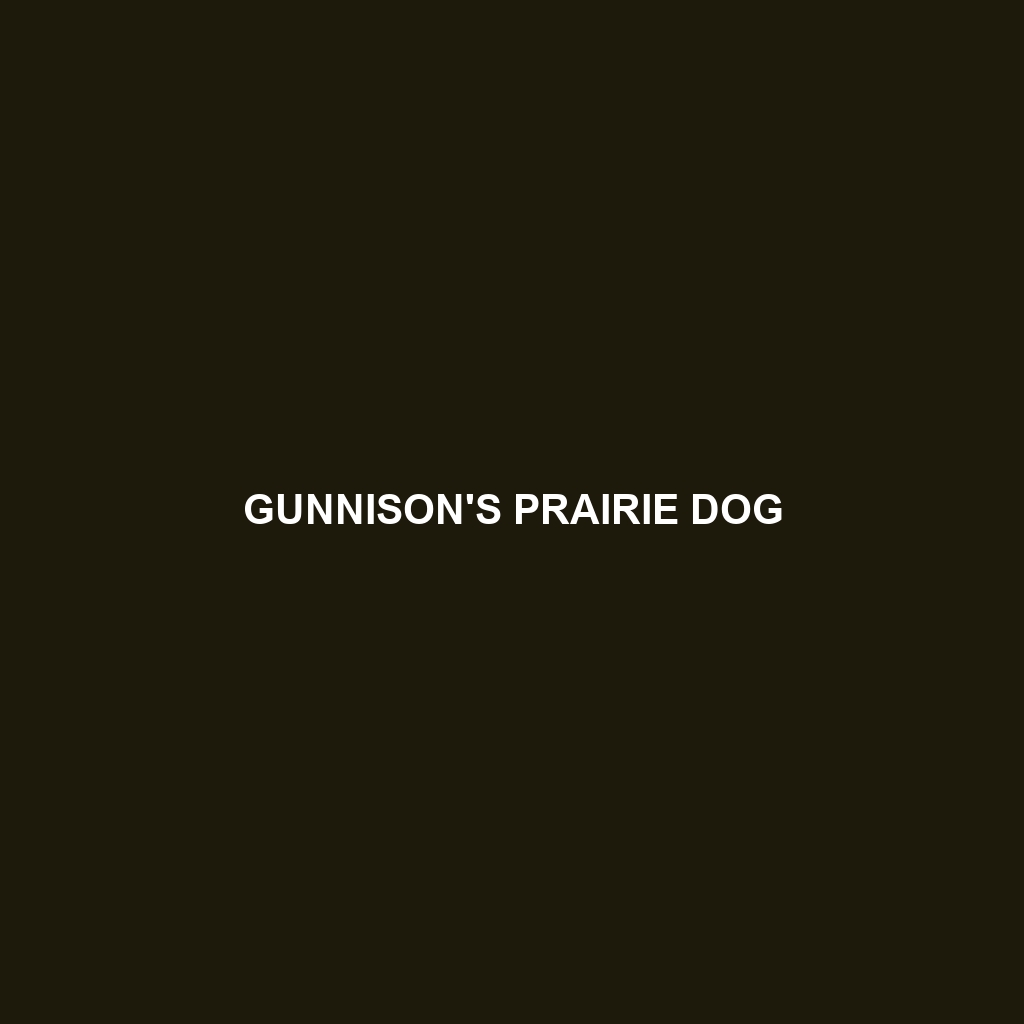Gunnison’s Prairie Dog (Cynomys gunnisoni)
Common Name: Gunnison’s Prairie Dog
Scientific Name: Cynomys gunnisoni
Habitat
The Gunnison’s Prairie Dog is primarily found in the mountainous regions of the western United States, particularly in Colorado, Utah, New Mexico, and Arizona. These small mammals thrive in open grasslands, meadows, and areas with sparse vegetation, where they create extensive burrow systems. Ideal habitats typically feature well-drained soils and areas with abundant grasses and forbs.
Physical Characteristics
Gunnison’s Prairie Dogs are medium-sized rodents, measuring about 12 to 15 inches in length and weighing between 1.5 and 3.5 pounds. Their fur is generally a light brown to yellow-brown color with a lighter underside. They possess short legs and a stout body, with small ears and a relatively short tail. Notable features include their strong teeth adapted for gnawing and a distinctive chirping call used for communication.
Behavior
Gunnison’s Prairie Dogs are social and live in large colonies known as “towns.” Their behavior is characterized by communal living, where they are often seen engaging in grooming, playing, and sentinel activities, where one individual keeps watch while the others forage. They are diurnal and highly active during daylight hours, primarily emerging from their burrows to feed and socialize.
Diet
This species primarily feeds on a herbivorous diet consisting of grasses, seeds, roots, and other vegetation. They are known for their selective eating habits, often targeting nutrient-rich plants. Gunnison’s Prairie Dogs play a crucial role in their ecosystem by facilitating plant growth through their foraging behaviors and burrowing, which aerates the soil.
Reproduction
Gunnison’s Prairie Dogs typically breed between late February and mid-April, depending on environmental conditions. After a gestation period of about 30 to 35 days, females give birth to litters ranging from 2 to 7 pups. Weaning occurs at around 6 weeks, and young prairie dogs begin to emerge from the burrow at about 3 weeks of age, often remaining close to their mothers for protection and learning essential survival skills.
Conservation Status
The Gunnison’s Prairie Dog is currently classified as threatened under the Endangered Species Act due to habitat loss, disease, and human activities such as agriculture and urban development. Conservation efforts are ongoing to protect their habitats and populations, recognizing their ecological importance and role in biodiversity.
Interesting Facts
One fascinating aspect of Gunnison’s Prairie Dogs is their complex vocal communication system, which consists of various calls that can convey different meanings, including the presence of predators. Additionally, they create intricate tunnel systems that can extend several feet underground, providing shelter and safety from threats.
Role in Ecosystem
Gunnison’s Prairie Dogs play a significant role in their ecosystem as a keystone species. Their burrowing activity helps to aerate the soil, promoting healthy plant growth, while their presence supports a variety of predators, including hawks, coyotes, and badgers. By influencing vegetation patterns and providing food sources for other wildlife, they contribute to the overall health and balance of their ecosystem.
This description provides an informative, engaging overview of Gunnison’s Prairie Dog, incorporating important keywords and structured for optimal SEO visibility while remaining accessible and credible.
